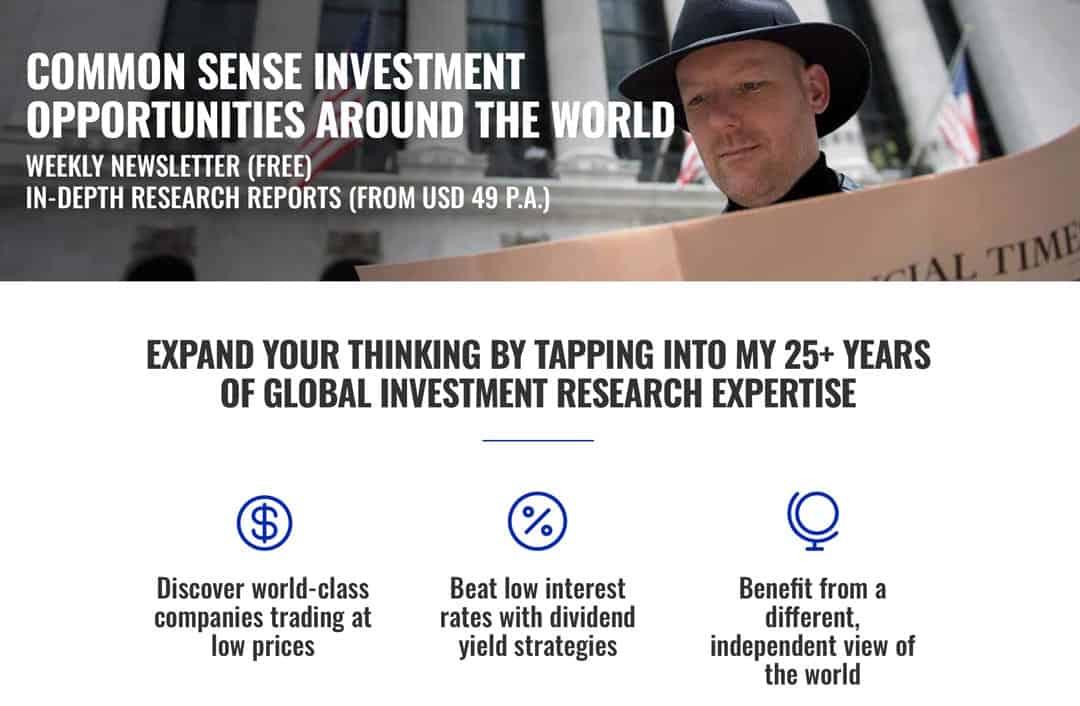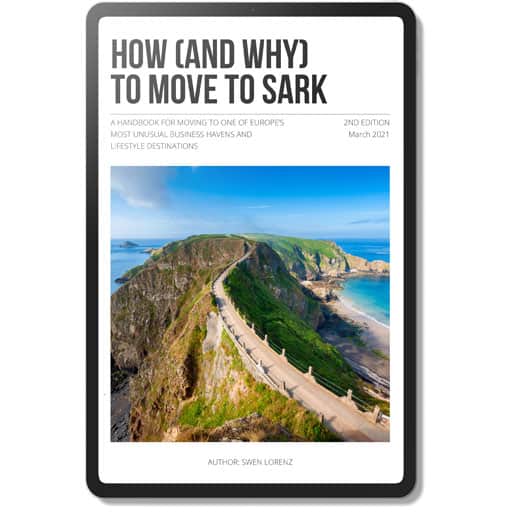I am the first to admit that those sceptics have a point. Setting up a new company or project is incredibly difficult, and the failure rate is well over 90%.
However, I recently wondered if there are a few key factors that determine who will overcome the odds.
To analyse the question, I’ve looked back at my own life’s work and purchased all available books on the subject of impossibility.
My findings surprised me.
I realised that in those projects that became a success, a single factor made a crucial difference. Getting this one factor right enabled success.
Also, I found two handy guide books for you.
This article aims to help you realise that you have the capacity to do what others call crazy.
The cases that I learned my lessons from
My career has spanned various projects and companies in entirely different fields (see an abridged list on my website).
A few of them are ideal examples of overcoming perceived impossibility. Several of them had the naysayer brigade out in force but became huge successes.
- Launching a luxury cosmetics brand in Russia and having it expand into the rest of the world? My colleagues and I were laughed at for pursuing the creation of Rouge Bunny Rouge in 2003. At the time, Russian consumers were all about Western luxury brands, and they viewed domestic products as inferior.
- Turning around a scientific research organisation that hadn’t paid salaries in three months? When I was parachuted into the Charles Darwin Foundation in 2012, the majority of observers had already written it off as financially, operationally and morally broken.
- Launching an investment website to create a widely-read publication and a money-earning media operation out of nowhere with an investment of less than EUR 5,000? When I went live with Undervalued-Shares.com in 2018, I was up against an incredibly crowded media sector and search engines that prioritised established content providers. Colleagues in the industry derided me.
How did it all turn out?
- Rouge Bunny Rouge expanded to 300 points of sales around the world, including the shopping arcades of the Plaza Hotel in New York.
- The Charles Darwin Foundation became a turnaround story that was celebrated by the international media across several continents.
- Undervalued-Shares.com has already become so successful that industry colleagues are now turning to me for advice on how to create something similar.
For full disclosure, I have had my fair share of failures in life. Not everything I touch works out. However, I am sticking to these three examples because they are perfect for the purpose of this article. I was up against a wall of sceptics, but things worked out nicely.
I realised that in those projects that became a success, a single factor made a crucial difference. Getting this one factor right enabled success.
I recently wondered, what were the factors that set these cases apart from the failures?
The question really occupied me.
To my own surprise, it always leads back to just one factor.
If you get this one aspect right, you will already have multiplied your chance of success.
To set the stage and give you the right context, I have to start with a word of warning, though.
First up – get real about the world’s brutal competition
Whatever company or project you create, you will have to be realistic about the competition you are facing.
There is hardly anything new under the sun.
You may love the widget you created, and you will be entirely convinced that your product or service is utterly unique, different, and superior.
The thing is, no one cares, and your own assessment is probably far too optimistic.
Just about ANY idea has already been tried by multiple other entrepreneurs. Often enough, people have told me they had this brilliant, utterly unique and altogether new idea. You then do a quick Google search and find that a bunch of other people have already launched precisely the same product.
Don’t fool yourself that your product or service is going to be utterly unique. It won’t.
The 101 of entrepreneurship tells you that you need to find a market niche. The truth is, there are hardly any out there.
In amidst seven billion people and entrepreneurship flourishing around the world, what are the odds that you can set up a business that doesn’t already have 20, 50 or 100 competitors trying to do mostly the same? How is the public ever going to notice you?
You have to be realistic about it.
Don’t fool yourself that your product or service is going to be utterly unique. It won’t. Never mind the fact that, at least initially, no one will care about your new venture. Prospective clients won’t even be able to find it, and your messages about it will drown in the very noisy world that’s out there.
Still, I think there is one tweak that can help you eventually overcome the odds.
It’s vital that you give it a lot of thought.
It’s certainly worked for me.
Cutting the path that no one sees (yet)
You need to give your company ONE feature that no one else in its industry has incorporated.
Look at Tesla as a high-profile, current example.
Cars? There are dozens of large, well-established companies that churn them out.
Electric cars? They were always going to be copied by other carmakers.
Gullwing doors? Fancy and cool, but easily copied.
Elon Musk built a car company that is less unusual than most perceive it to be.
However, he added ONE aspect that no one else had previously tried out.
He turned Tesla into a social movement of sorts.
Musk has amassed an army of evangelists – tens of millions of followers on Twitter, who spread his message and enthusiasm, invest in his company, and buy his product.
Would Tesla have succeeded without them?
Which other car manufacturer CEO regularly makes the news cycle because of a single 144-character message? Exactly, none.
Everything else about Tesla is relatively ordinary when you look at it in broad daylight.
The good news is, by setting your company apart from the rest with just one crucial factor, you can make a real difference.
The bad news is, you need to think very hard how you can differentiate yourself through one carefully-chosen aspect.
One twist – carefully chosen – is sufficient to set you apart
Looking back at my own examples cited above, their success boiled down to doing one thing differently.
In each case, it was something I had chosen because common sense dictated that it would probably work.
- Rouge Bunny Rouge tapped into Russians’ pride and love of their country’s history and heritage. No one had made use of that in the luxury cosmetics sector before, and it worked for getting the brand off the ground. Once it had taken off, its unusual story attracted the media’s interest. The resulting firestorm of media reporting created hype and demand for the products. Everything else about the company was fairly normal. The actual products were manufactured by a white-label producer that churned out products for countless other brands.
- At the Charles Darwin Foundation, I turned the organisation’s focus on telling stories through digital and conventional media. If you want to sign up support around the world for a worthy cause, that’s what you have to do to captivate an audience and make them open their wallet. Obvious, isn’t it? Until then, the organisation had always installed scientists as CEO, and they viewed communication and PR as something too ordinary for a PhD CEO to focus on. I, on the other hand, operated as a storytelling CEO who engaged the media, and hired someone else as director of science.
- Undervalued-Shares.com has the same issue as the rest of the finance industry: everyone is putting their pants on the same way. How do you stand out? I use my website to publish research reports that are longer and more in-depth than almost anything else you can find in the industry. Does everyone want to read 100-page reports? Certainly not. But with one billion equity investors worldwide, I just needed to capture 0.000001% who were looking for something different. Everything else about Undervalued-Shares.com is relatively ordinary. The website has great technical execution, but it’s not like I have access to corporate secrets.
Does that make it sound a lot easier, or a lot more difficult?
I want to think that it’s the former.
Granted, finding that one twist that will make your approach genuinely unique isn’t all that easy.
On the other hand, it’s just one twist you need. If it’s the right one, then everything else is simply execution based on all the standard management principles that you can read and learn about elsewhere.
The most challenging part could be something else altogether. Doing something different than everyone else will make you “controversial”.
Uh-oh!
Use being different as fuel for lighting your fire
Whatever you do to set yourself apart, there’ll always be those who call you crazy (or worse!).
The critics are often people who aren’t bold themselves, and merely looking to justify their unadventurous path.
At the Charles Darwin Foundation, my approach of leveraging the media worked up the ire of scientists who felt I was “trivialising conservation problems”. Seriously, I had to deal with that.
Remember when (not too long ago) the media loved describing Elon Musk as “controversial”? That was before they switched to calling him “the world’s richest man”.
Most people think that being viewed as controversial is something negative. In Western society, stepping out of line is not viewed on too kindly. As my parents told me when I was a child: “Watch out for what the majority does, and then do the same.” Well-intentioned advice. But, oh boy!
The trick is not to let negative feedback discourage you. Instead, turn it into fuel for firing up your engine.
When people throw bricks at you, use them to lay a firm foundation.
Overcoming the odds and achieving something that others perceive to be impossible has a tremendous pay-off in the marketplace. To get there, you have to turn yourself into an impossibility thinker. Having a thick skin and an ability to stay your course is a vital part of it.
Your alternative would be to say nothing, do nothing, and be nothing. Presumably, that’s not you because otherwise, you wouldn’t have found your way to my website.
Find that one aspect where your venture breaks with conventional wisdom.
When people throw bricks at you, use them to lay a firm foundation.
You can then take care of everything else through running a solid, but relatively ordinary operation. Most of your competitors will not have that one magic factor that makes them stand apart, so you will already be ahead of them.
Once you have found one such factor that works, milk it for all you can. Don’t change the formula ever again, and just keep doing more of the same to gradually capture market share and grow.
It’s not more than that. It’s entirely feasible for anyone who dedicates some serious thinking to it, and it’s quite a fun ride!
How to learn more about this
I wanted to compress the subject into a short article because that’s the only way to get you going on this journey.
There is, of course, a lot more detail to this.
Here are a few resources to help you delve deeper into the subject.
The best book I found about doing the impossible is called just that: “Doing The Impossible – The 25 Laws for Doing The Impossible“, published in 2011 by Patrick Bet-David. If I were to read just one book about the subject, I’d make it that one. It’s high-level but inspiring and energizing. With just 160 pages, it won’t take up much of your time.
If you are a person who wants to do more of a systematic course about the subject, check out “Creating the Impossible: A 90-day Program to Get Your Dreams Out of Your Head and Into the World“, published by Michael Neill in 2018. It’s a 280-page book that runs you through a 13-week course.
You can also read David Perell’s article about building a personal monopoly which mostly describes my own approach, albeit with different words.
As yet another alternative, read up on Peter Thiel’s effort to find “secrets” and to locate the entrepreneurs who uncover them. Here is a brief summary taken from one of the many articles and YouTube videos:
“Do one thing uniquely well! Thiel says that uniqueness is the USP for any startup. He says that it is important for a company to do ONE thing exceptionally well. That is what adds to its uniqueness. It should be able to do that ONE thing better than anyone in the world. An important question is, ‘What do you know that nobody else understands?’”
Careful, though, once you have latched onto the subject, you’ll fall down a rabbit hole and spend hours reading up on it.
Once you have understood it, it’s so apparent that it’s almost maddening. It takes time to get there, though. I only got to sit down and put all this down on paper at the age of 45. Luckily, life tends to be very long and we can nowadays have careers well into our 70s or 80s.
At whatever stage in life you are right now, don’t hesitate to start thinking about how you, too, can pull off the impossible.
If you liked this article, you will probably also enjoy:

Looking for clever ways to invest your hard-earned cash?
Head over to my investment website Undervalued-Shares.com for common sense investment opportunities from around the world. Ideas that you won’t find anywhere else!
Want to print this article? Open a printer friendly version.
Did you find this article useful and enjoyable? If you want to read my next articles right when they come out, please sign up to my email list.
Share this post:


